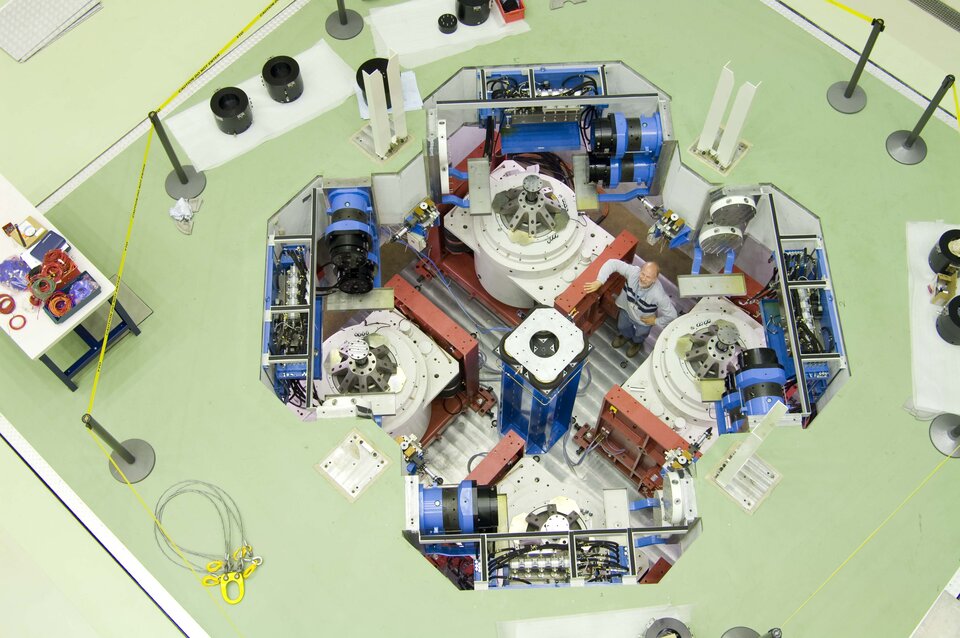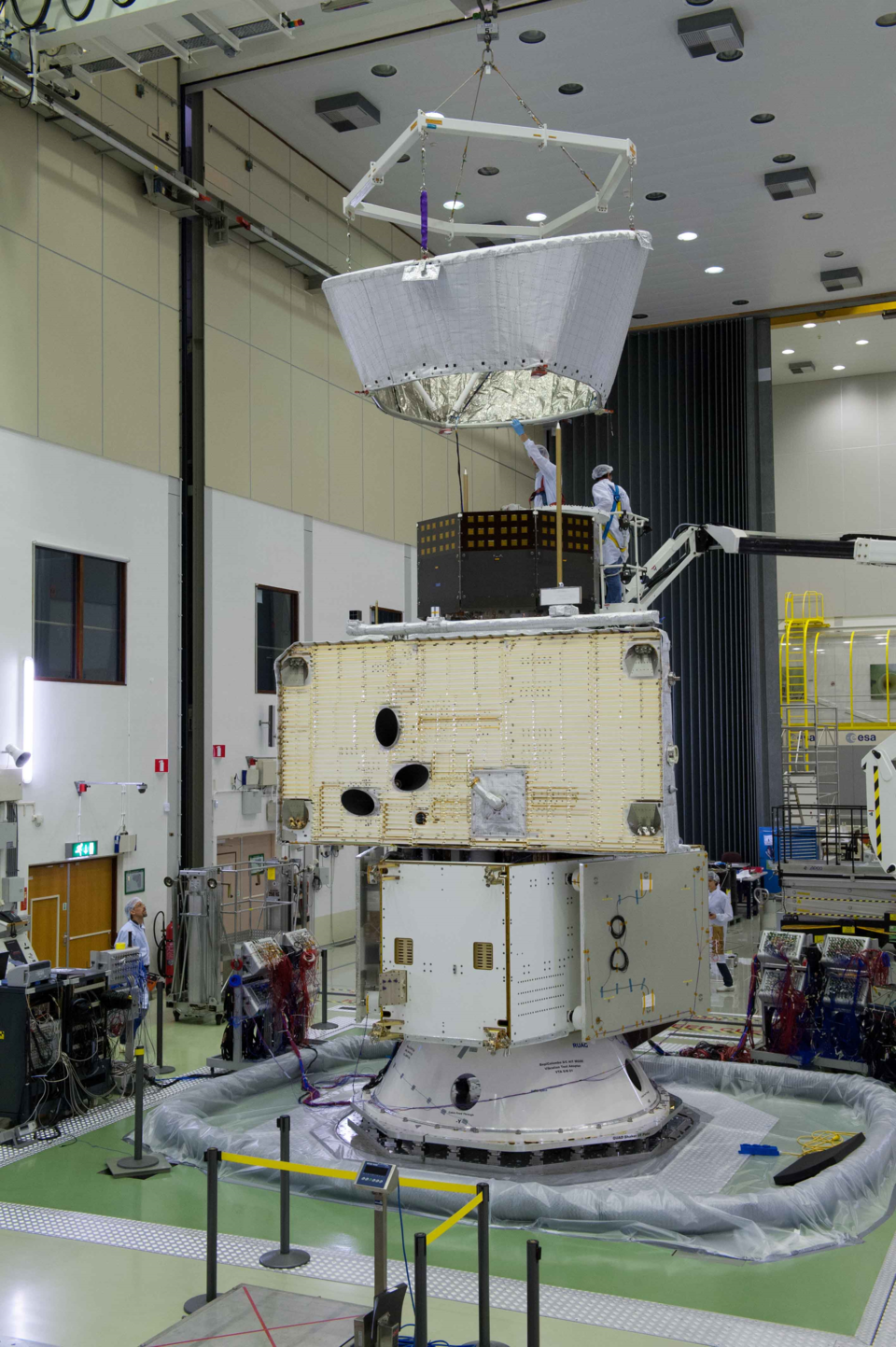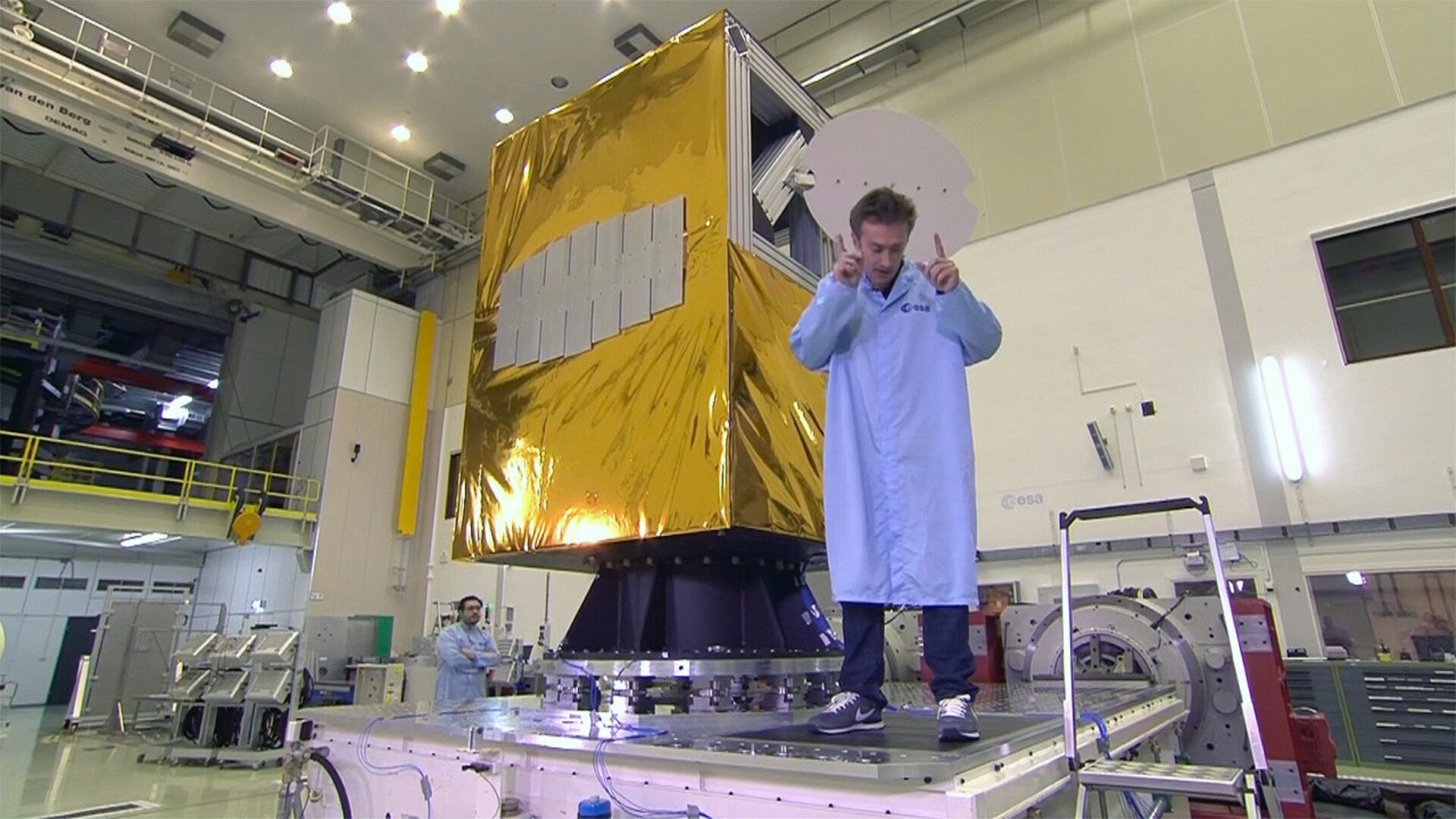Electrodynamic shakers
What are they for?
One of the major risks faced by a satellite stems from the high level of vibration to which it is submitted during launch. It is essential to test a spacecraft and its component parts under similar conditions to ensure it will endure its violent ride to orbit.
Engineers are able to perform this kind of test using ESTEC's Electrodynamic shakers. These are electrically powered.
What kind of testing do they support?

Two types of test are performed using these facilities:
- Design qualification tests – usually carried out on the structural model during the development phase in order to demonstrate that the design is such that the equipment can withstand the vibration level it will see during launch with a qualification margin. The tests also allow verification of the spacecraft mathematical model by measuring motion at 'resonant frequencies' at which elements of the spacecraft structure are prone to self-vibrate once vibration is initiated.
- Acceptance tests – on the flight model, to verify workmanship and to ensure that the equipment does indeed operate satisfactorily in its final configuration and will not degrade when subjected to the vibrations it will encounter during launch.
There are three characteristic modes of vibration testing that are carried out – 'sine' testing involves subjecting the test item to a progressive sweep of frequencies and amplitudes. 'Random' testing randomises this progression while 'shock' testing induces a sudden severe excitation, simulating the shocks felt during stage separations and engine firings.
What are their features?

- One 80 kiloNewton shaker used to test small items to high acceleration levels. The specimen can be mounted directly on the shaker head or on a light composite head expander that offers a larger mounting surface for the vertical configuration. For lateral excitation, the shaker can be coupled to a slip table that provides an area of 1200 by 1200 mm.
- Two 160 kiloNewton shakers used individually for testing subsystems in vertical configuration. To extend the interface of the shaker in this configuration a single-head expander with an internal bearing and an outside diameter of 1108 mm can be fitted to the shaker armature.
- Multishaker – this facility is built of two 160 kiloNewton shakers coupled to a large slip table. It can efficiently and safely test spacecraft with a mass of 10,000 kg in horizontal directions. The horizontal configuration is achieved using a large aluminium sliptable of 3.5m by 3m. This plate is guided by means of 69 hydrostatic T-film bearings that offers a very stiff plate and optimum guiding.

- QUAD system – This facility is used to perform tests in a vertical direction on the largest or heaviest specimens. The force is provided by four 160kN shakers. The specimen is fixed to the shakers by means of a magnesium QUAD-head expander with an outside dimension of more than 3m. Engineers designed the alignment and guidance system of the QUAD assembly especially to reduce parasitic movement of the specimen in all conditions. The QUAD-head expander is judiciously ribbed to provide a good rigidity/mass ratio and also to provide good transmission of the forces delivered by the four shakers. It is provided with an additional pneumatic load-compensation device which gives the assembly a static load capacity of 10,000 kg.
The safety of the test object is a matter of prime importance for all test activities. Vibration tests involve high energy so every effort has been made to offer the maximum guarantees of safety. All shakers are controlled by a high performance digital control console designed for easy programming of the various test modes.
In combination with the remote control system and interlock circuitry, the console controls all functions of both the power amplifiers and the shakers on the one side and the shakers on the other. It provides timely information on any deviations from normal conditions and ensures the immediate shutdown of the system in a predetermined and controlled manner should the need arise – ensuring the safety of both the test object and the facility.
The system is able to record, monitor and control up to 40 channels in real time and can accommodate most kinds of sensors used in vibration testing (such as piezoelectric, ICP, Teds or voltage output sensors). A digital data recorder records the time history of all the channels connected to the control system to provide back-up in case of anomaly. The responses of the specimen are recorded by a separate Mechanical Data handling system.
What benefits do they deliver?
The different facilities available support vibration tests on broad types of hardware. The 80 kiloNewton shaker is used for compact items such as micro-satellites, electronic boxes, batteries or cameras.
The other systems (multishaker and QUAD) - thanks to their dimensions and numerous fixation interfaces - can accomodate either large heavy items or large light weight structures. In both cases, the large force available allows the testing of both type of specimens to very high acceleration levels.
More information
Please contact Gaetan Piret, ESTEC Test Centre Manager:
Gaetan.Piret@ esa.int +3171565 6565


